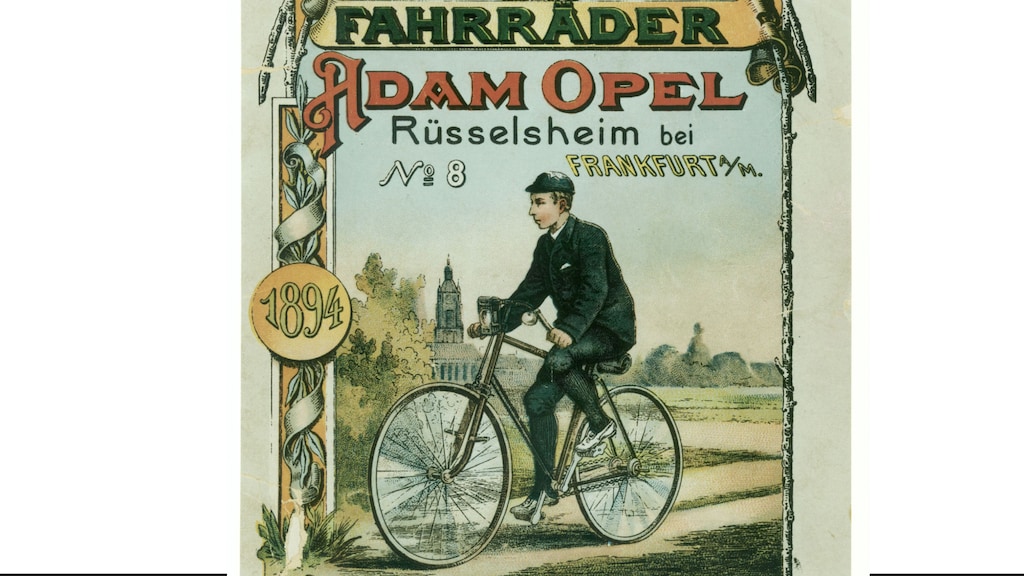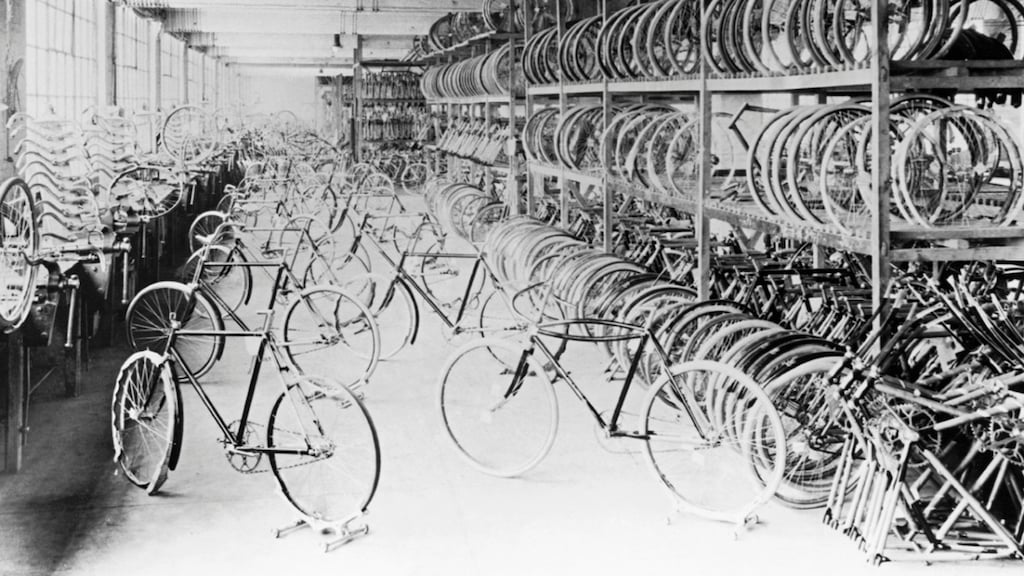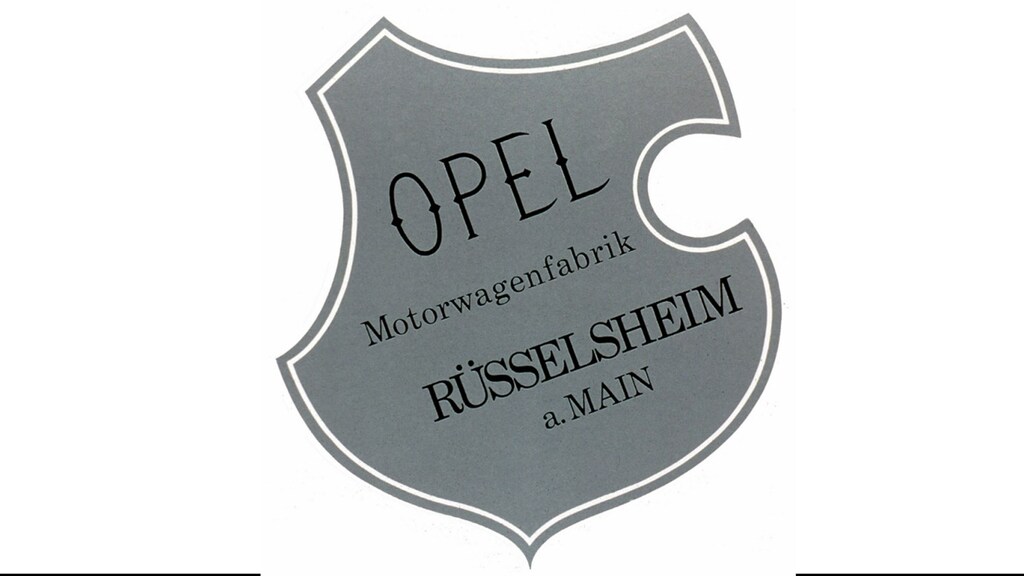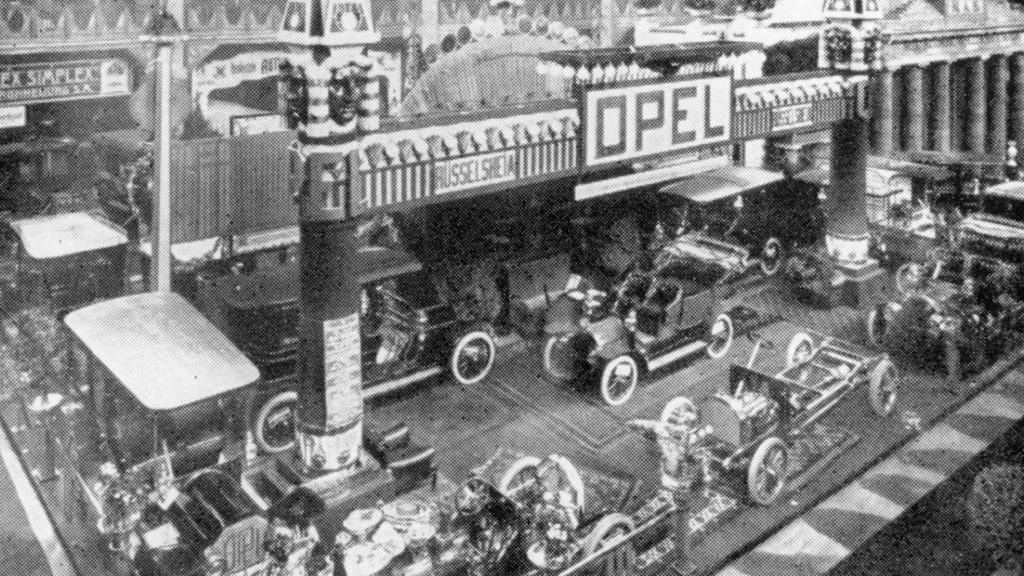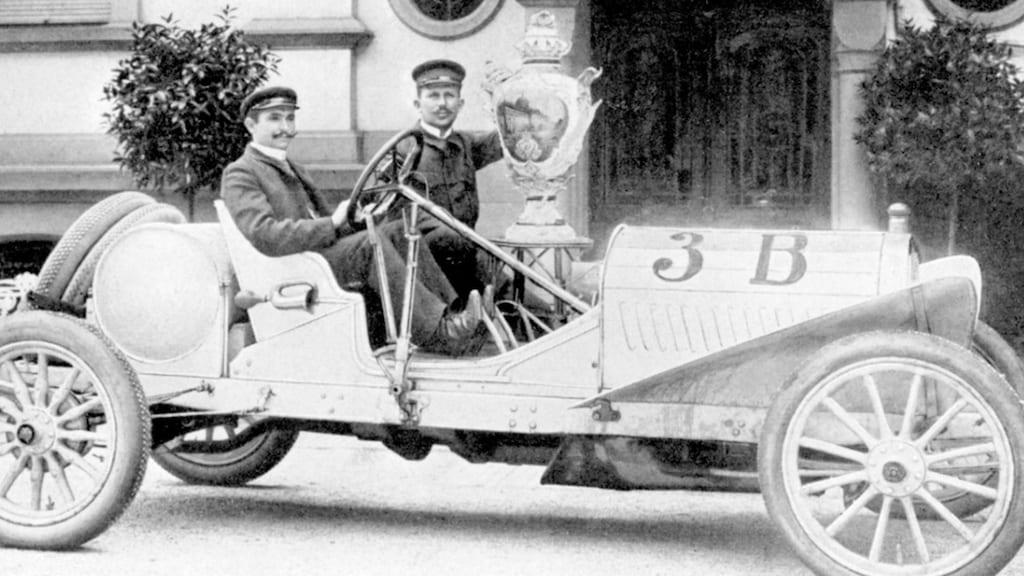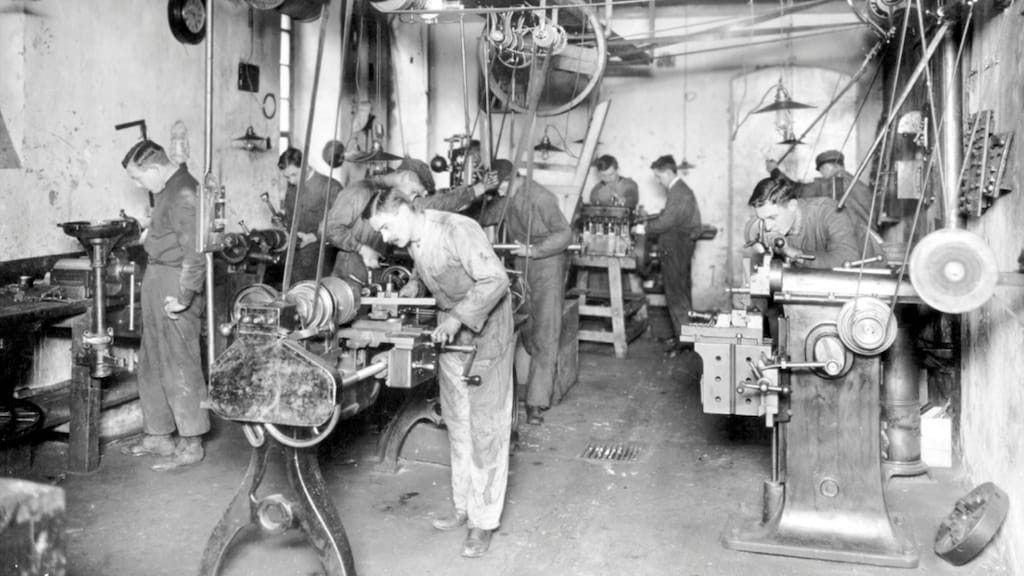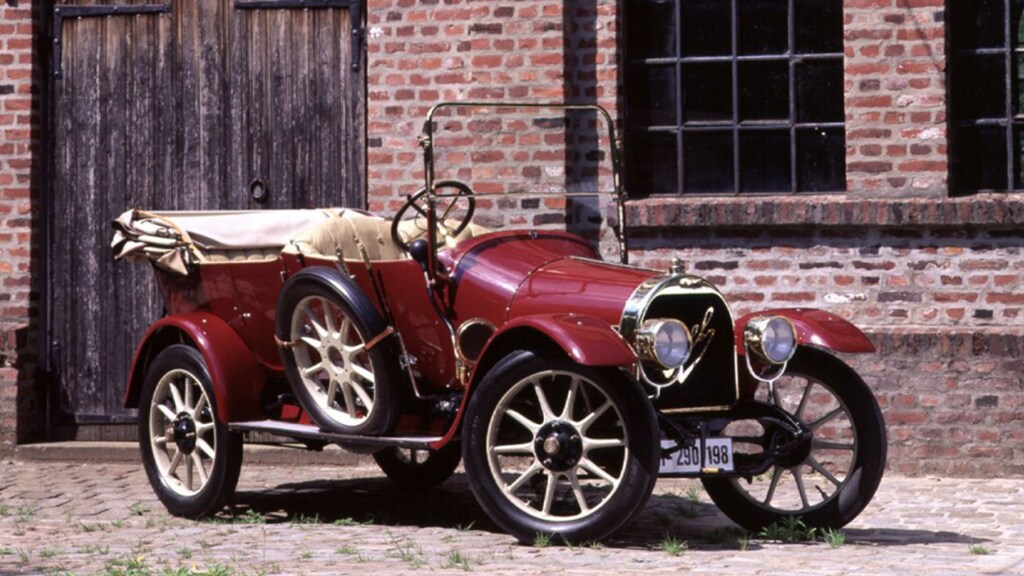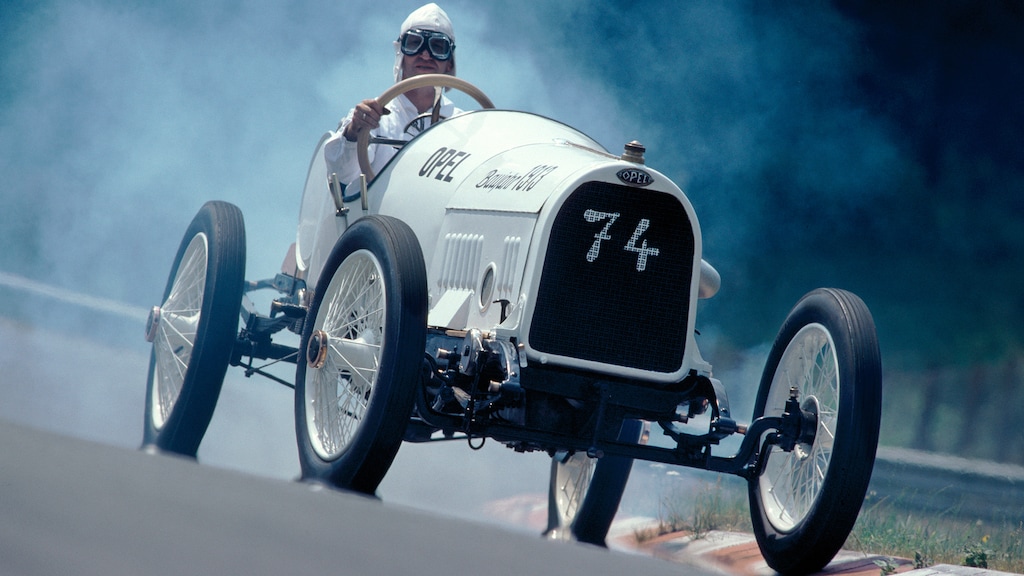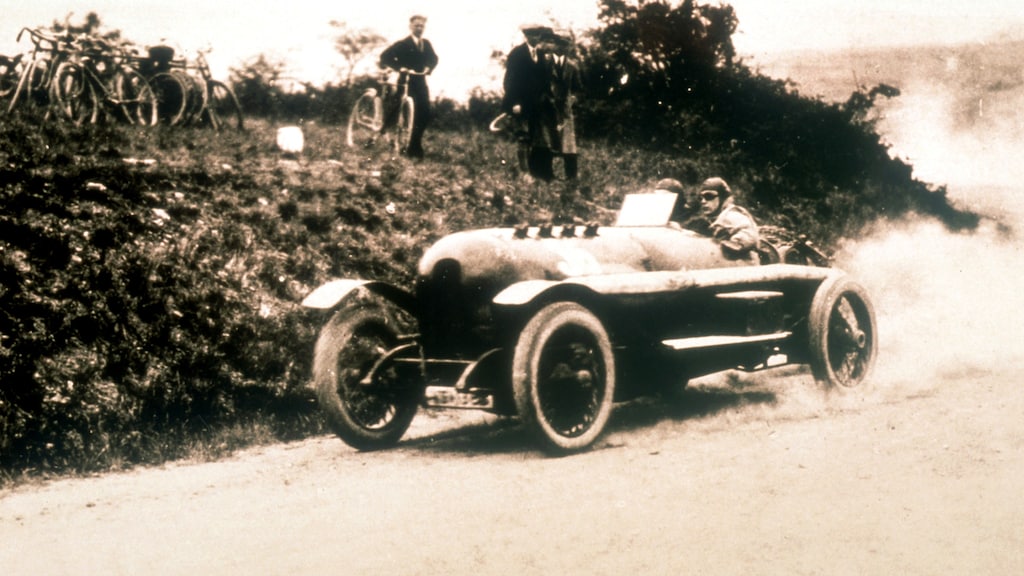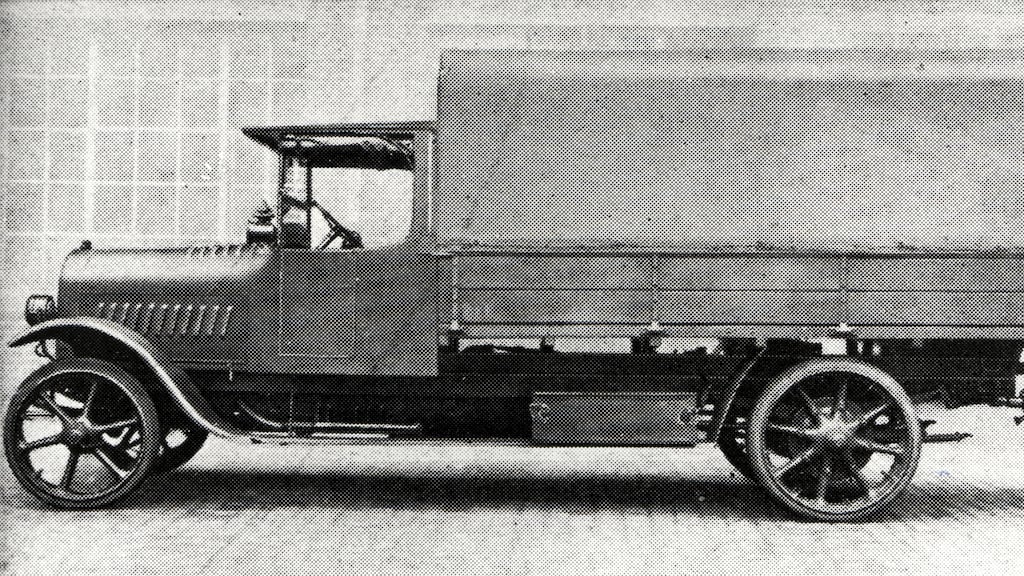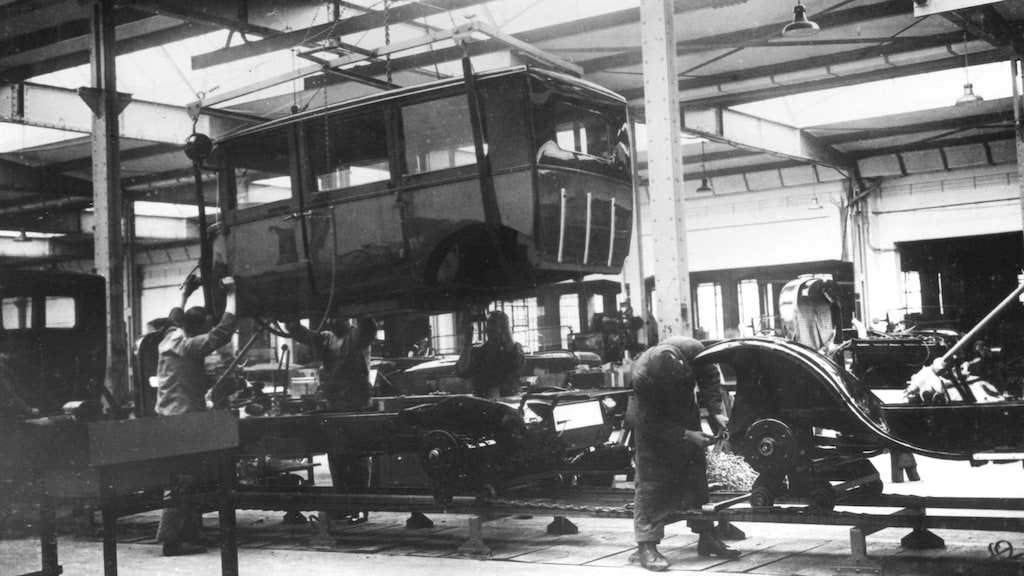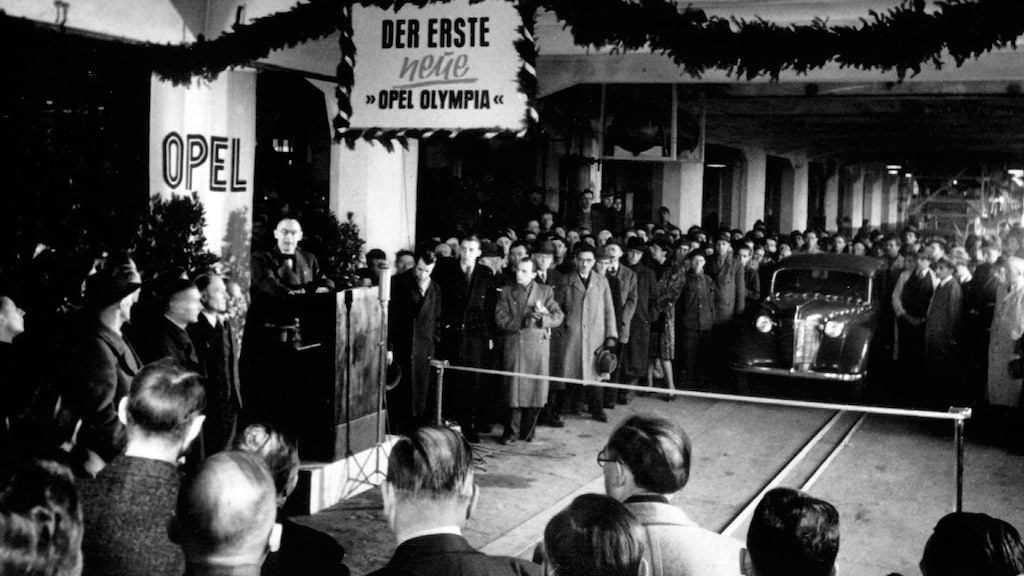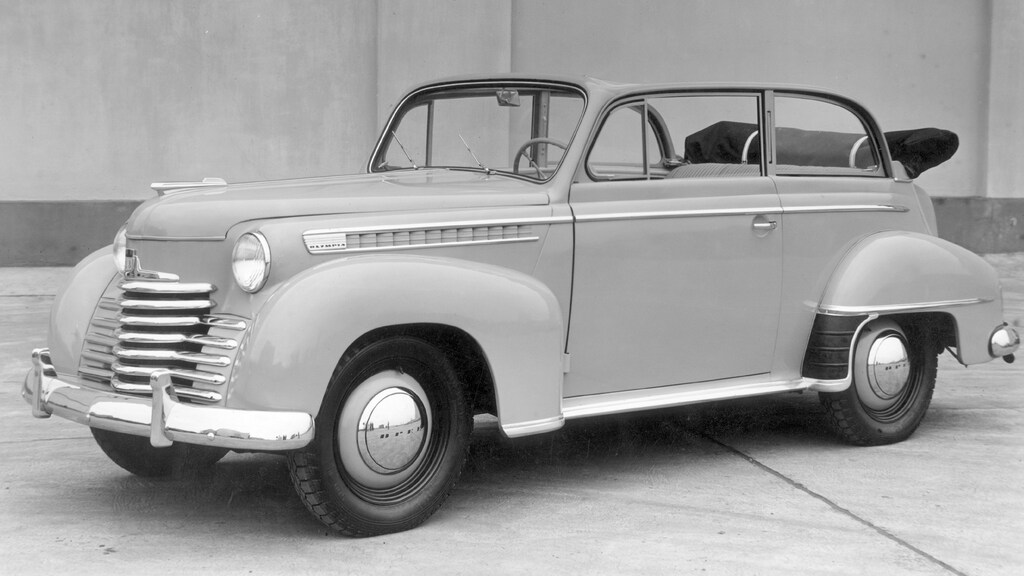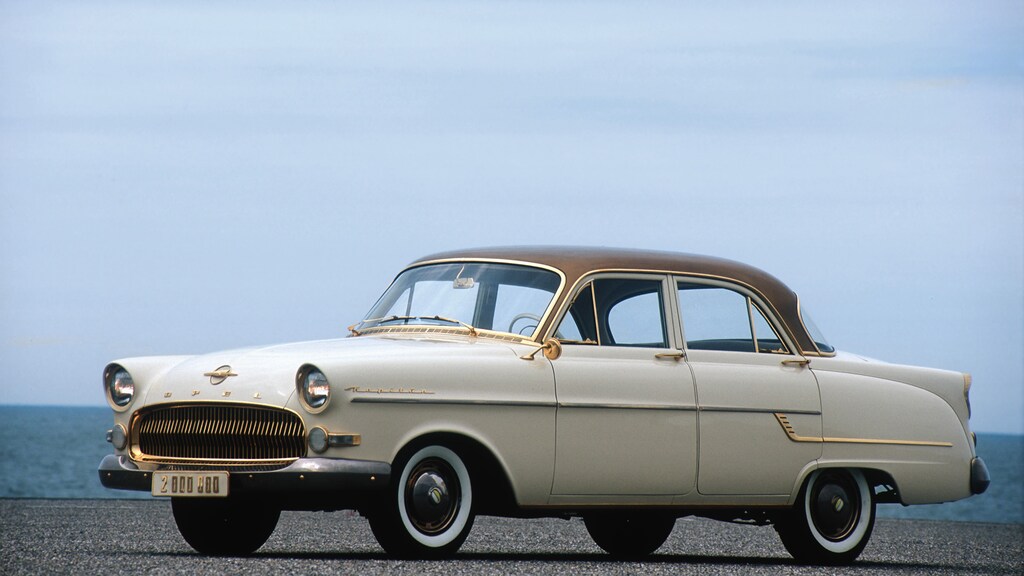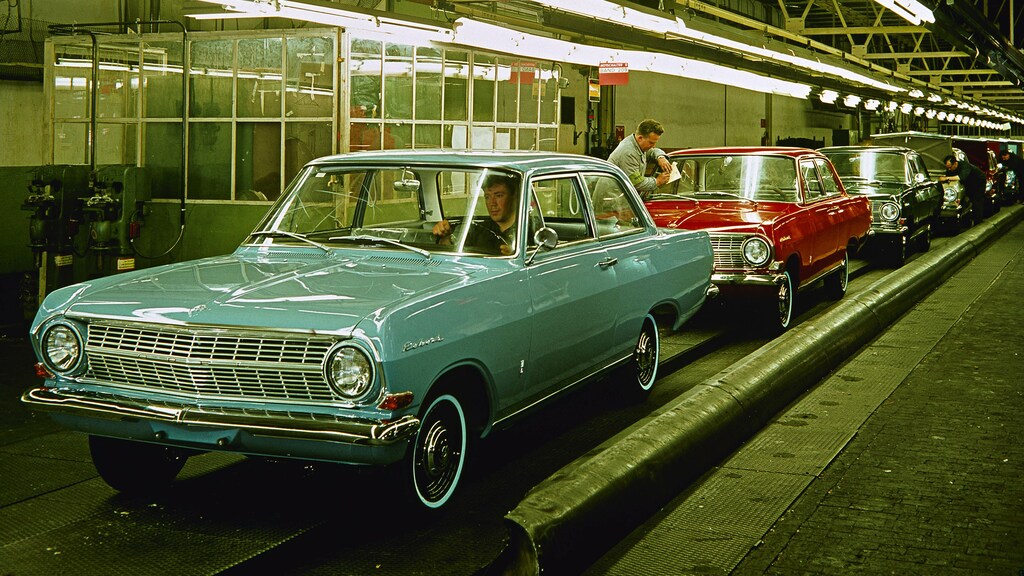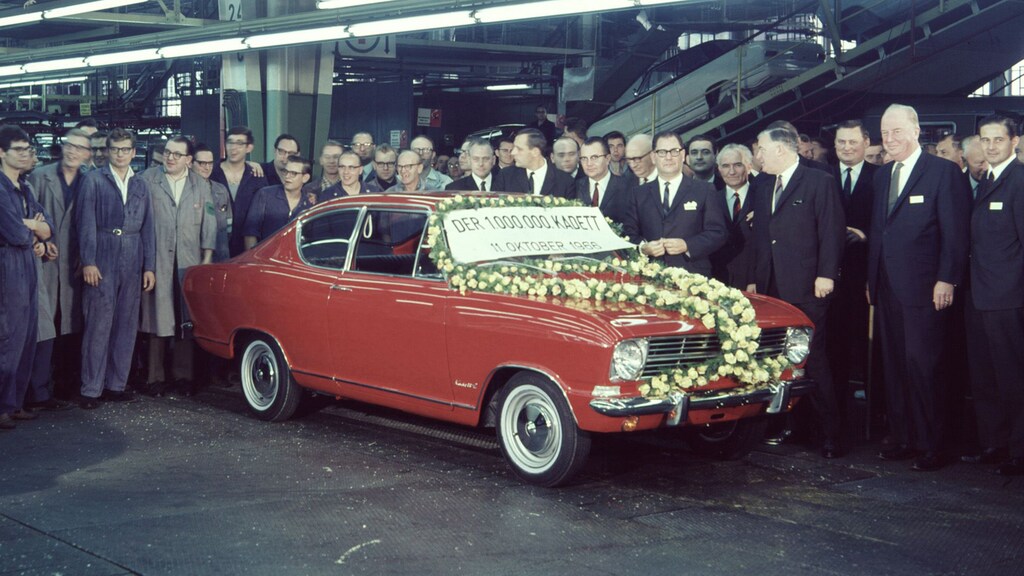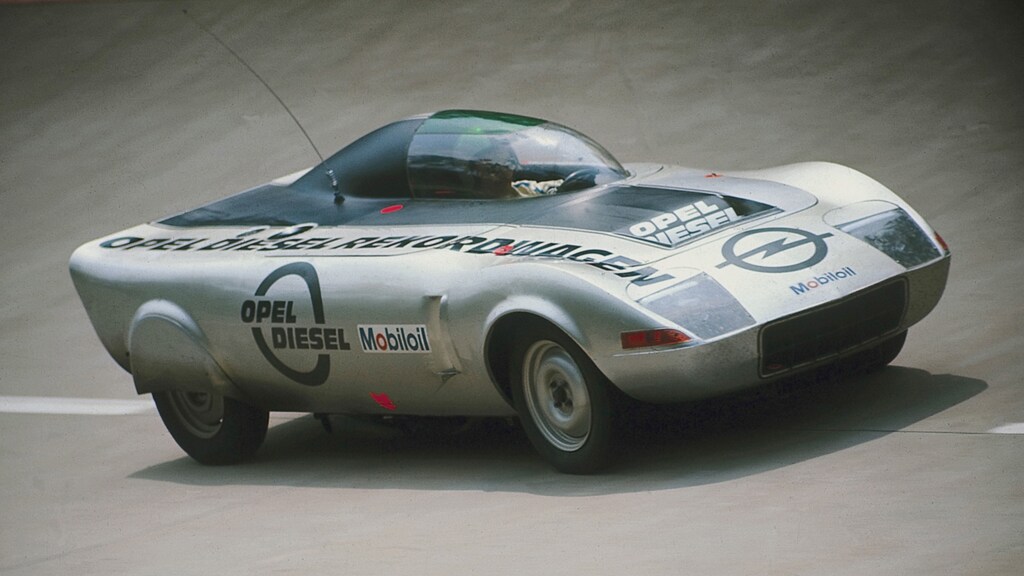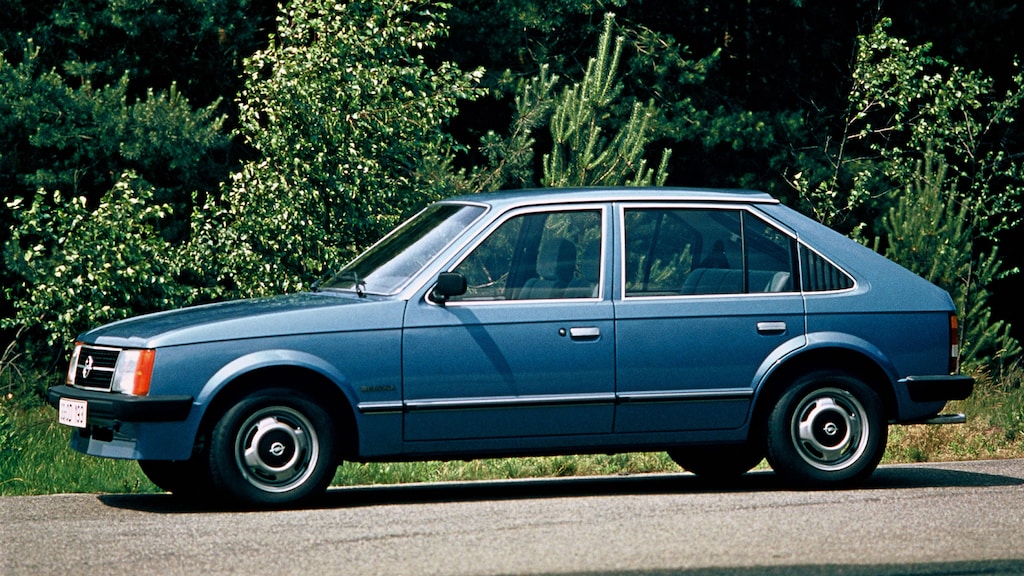The image path: '/content/dam/opel/master/experience-opel/history/Opel_Experience_History_Heritage_1868_Group_Photograph_21x9_36146.jpg' is not a valid image resource
History
Discover our history & heritage
1862 - ADAM Opel goes into business
After years of employment as a journeyman metalworker, Adam Opel goes into business in his hometown of Rüsselsheim: he builds his first sewing machine, laying the foundation for the Opel company.
1868 - first factory building
The sewing-machine business flourishes. Adam Opel moves into his first factory building, an industrial hall with attached living quarters. A year later, he introduces steam power into the manufacturing facilities.
In 1868, Adam Opel marries Sophie Scheller, the daughter of a factory owner. Five sons are born in the years that follow: Carl on August 31, 1869; Wilhelm on May 15, 1871; Heinrich on September 22, 1873; Friedrich on April 30, 1875; and Ludwig on January 1, 1880.
In 1868, Adam Opel marries Sophie Scheller, the daughter of a factory owner. Five sons are born in the years that follow: Carl on August 31, 1869; Wilhelm on May 15, 1871; Heinrich on September 22, 1873; Friedrich on April 30, 1875; and Ludwig on January 1, 1880.
1872 - factory health insurance plan
Adam Opel establishes a factory health insurance plan.
1886 - entering the business of bicycle manufacture
By entering the booming business of bicycle manufacture, Opel secures a second foothold for his company. The Opel sons are enthusiastic cyclists, winning several hundred races on Opel bicycles in the years up to 1898. In less than forty years, Opel becomes the world’s largest bicycle producer.
1895 - ADAM Opel dies at the age of 58
Adam Opel dies at the age of 58. His wife Sophie assumes responsibility for running the business, with the support of her sons.
1899 - the first Opel automobile
“Opel Patent Motor Car, System Lutzmann” is the name given to the first Opel automobile. It marks the beginning of production in Rüsselsheim, and forms the basis for building the first utility vehicles. Within the year, the company makes its international motor sport début.
20th century - Opel builds its first motorcycle
1901 - Opel produced darracq automobiles under license
Heinrich von Opel wins the Königsstuhl hill climb near Heidelberg in an Opel Lutzmann.
A contract is finalized with the French manufacturer Alexandre Darracq, authorizing Opel to produce Darracq automobiles under license.
Opel builds its first motorcycle.
A contract is finalized with the French manufacturer Alexandre Darracq, authorizing Opel to produce Darracq automobiles under license.
Opel builds its first motorcycle.
1902 - the first model built entirely by Opel
The first Darracq chassis are outfitted with Opel bodies in Rüsselsheim. The vehicles are marketed under the brand name Opel Darracq.
The first model built entirely by Opel, with a newly developed 10/12 hp, two-cylinder engine, is completed in fall of the same year.
The first model built entirely by Opel, with a newly developed 10/12 hp, two-cylinder engine, is completed in fall of the same year.
1903 - first four-cylinder engine
Opel develops its first four-cylinder engine, with 20/24 hp output.
1905 - showroom in berlin
An Opel Darracq showroom and service center opens its doors near the Tiergarten park in Berlin.
1906 - 1000th automobile
The one-thousandth Opel automobile leaves the factory. Opel establishes a branch factory in Berlin.
1907 - the best german automobile
In a specially built 45 kW (60 hp) car, Opel test driver and company race-car driver Carl Jörns wins the Kaiser’s Prize Race in the Taunus region: Opel is awarded the Kaiser’s Prize for the best German automobile and is designated purveyor to the court.
1909 - Opel introduces "doktorwagen"
Opel introduces an affordable compact car. The 4 kW (8 hp) two-seater, designed for customers who place great importance on dependability, becomes known as the “Doktorwagen” (Doctor’s Car).
1910 - Opel's market share grows
A modular production system is implemented: prefabricated car bodies are combined with various chassis and engines.
Opel’s market share in Germany grows to 12.3 percent.
Opel’s market share in Germany grows to 12.3 percent.
1911 - Opel's first aircraft engine
With a 6/16 hp model, Opel adopts the new “torpedo” body form. In addition, Opel responds to technological developments, filling new market gaps: the carmaker develops its first aircraft engine, which drives the Euler biplane. At the same time, the company builds a heavy-duty motorized plow for large farms.
A major fire destroys a large part of the plant.
Sewing-machine production ends with the manufacture of the one-millionth unit.
The “Adam Opel Foundation” is established to fund an old-age pension plan for the company’s workforce.
A major fire destroys a large part of the plant.
Sewing-machine production ends with the manufacture of the one-millionth unit.
The “Adam Opel Foundation” is established to fund an old-age pension plan for the company’s workforce.
1912 - Opel's 50th anniversary
Opel celebrates its fiftieth anniversary.
The ten-thousandth Opel motorcar rolls out of the plant.
Based on experience gathered from the major fire of 1911, the engineers in Rüsselsheim develop the “Motorized Fire Pump” for the plant fire brigade. The early fire engine is successfully marketed to towns and cities.
A new flagship model is introduced: a substantial 40/100 hp four-cylinder vehicle.
The ten-thousandth Opel motorcar rolls out of the plant.
Based on experience gathered from the major fire of 1911, the engineers in Rüsselsheim develop the “Motorized Fire Pump” for the plant fire brigade. The early fire engine is successfully marketed to towns and cities.
A new flagship model is introduced: a substantial 40/100 hp four-cylinder vehicle.
1913 - ground-breaking engine technology
Race cars employing ground-breaking engine technology are developed for the Grand Prix season: the four-cylinder power units with 4-liter and 4.5-liter displacements feature four valves per cylinder and an overhead camshaft driven by a vertical shaft.
1914 - Opel becomes germany’s largest automobile manufacturer
A record-breaking race car is developed, based on the engine technology that led to the 1913 Gran Prix triumph. The cutting-edge vehicle is not only one of the first cars to feature four-valve technology – at a swept volume of 12.3 liters, its four-cylinder, 16-valve power unit is the largest displacement engine to emerge from the Rüsselsheim facilities. Opel becomes Germany’s largest automobile manufacturer.
A 5/14 hp model goes into production. The hugely successful car is dubbed “Puppchen” (little doll).
During WW I (1914–1918), Opel produces heavy trucks for the military.
A 5/14 hp model goes into production. The hugely successful car is dubbed “Puppchen” (little doll).
During WW I (1914–1918), Opel produces heavy trucks for the military.
1916 - Opel's first six-cylinder engine
In a 18/50 hp model, Opel introduces its first six-cylinder engine, with a displacement of 4.7 liters.
1919 - Opel racetrack
The Opel Racetrack, located south of Rüsselsheim, is inaugurated. The oval course with banked curves, paved in concrete, is the first permanent track for racing and testing in Germany – years ahead of other well-known racetracks, such as the Berlin AVUS and the Nürburgring.
1920 - the first works council
The first works council is established at Opel.
1921 - car race in berlin
Opel builds an eight-cylinder engine, which proves itself in a number of races – notably in the Eifel race of 1922.
Fritz von Opel wins the first car race on the AVUS track in Berlin, in the “eight taxable horsepower” class of the period.
Fritz von Opel wins the first car race on the AVUS track in Berlin, in the “eight taxable horsepower” class of the period.
1924 - modernized automobile production
Investing one million gold marks, Opel completely modernizes its automobile production. The Rüsselsheim plant is the first German manufacturer to introduce the high-volume production methods of the future, including assembly-line processes.
The first car to roll out of the updated plant: the legendary 4/12 hp model, best known as the “Laubfrosch” (Tree Frog), in reference to its green body paint and protruding headlamps.
Opel dealerships introduce a revolutionary new service: standardized maintenance at fixed prices.
The first car to roll out of the updated plant: the legendary 4/12 hp model, best known as the “Laubfrosch” (Tree Frog), in reference to its green body paint and protruding headlamps.
Opel dealerships introduce a revolutionary new service: standardized maintenance at fixed prices.
1926 - the rüsselheim racing team
Thanks to state-of-the-art production methods and strong demand, the price for the “Tree Frog” sinks from its original 4,500 marks to 2,980 marks, eventually dropping as low as 1,990 marks. This makes automobiles affordable for even broader sections of the public.
The Rüsselsheim racing team scores a total of 75 victories in various motor sport classes.
The Rüsselsheim racing team scores a total of 75 victories in various motor sport classes.
1928 - Opel: the largest german carmaker
With a market share of 37.5 percent, Opel is by far the largest German carmaker. In preparation for an alliance with General Motors, the company is converted into a listed stock corporation.
A new flagship model is christened: the Regent Limousine, powered by a 24/110 hp, eight-cylinder engine.
Motorcycle technology reaches a high point, with the introduction of the Motoclub. The avant-garde motorcycle features a pressed-steel frame, a modern teardrop-shaped fuel tank and an air-cushioned saddle.
The RAK rocket-propelled vehicle program begins: RAK 1 accelerates from zero to 100 km/h in just eight seconds on the Opel Racetrack. One month later, Fritz von Opel reaches a top speed of 238 km/h in the RAK 2 on the AVUS track in Berlin, to become a popular hero. On a closed stretch of railway tracks near Burgwedel, the rocket sled RAK 3 reaches 254 km/h, setting a new world record for speed on rails.
A new flagship model is christened: the Regent Limousine, powered by a 24/110 hp, eight-cylinder engine.
Motorcycle technology reaches a high point, with the introduction of the Motoclub. The avant-garde motorcycle features a pressed-steel frame, a modern teardrop-shaped fuel tank and an air-cushioned saddle.
The RAK rocket-propelled vehicle program begins: RAK 1 accelerates from zero to 100 km/h in just eight seconds on the Opel Racetrack. One month later, Fritz von Opel reaches a top speed of 238 km/h in the RAK 2 on the AVUS track in Berlin, to become a popular hero. On a closed stretch of railway tracks near Burgwedel, the rocket sled RAK 3 reaches 254 km/h, setting a new world record for speed on rails.
1946 - the first postwar Opel
Production of Frigidaire household refrigerators recommences. The first postwar Opel, a 1.5-ton Blitz truck, is built.
1947 - the olympia model
Passenger car production resumes with the Olympia model.
1948 - the comeback of the kapitän
The Rüsselsheim plant resumes production of the Kapitän, which enjoys a popular comeback.
1950 - Rüsselsheim plant
Reconstruction of the Rüsselsheim plant is completed.
1951 - third postwar generation of Opel
Opel becomes the first German manufacturer to establish on-site proving grounds, at the Rüsselsheim plant.Production of the third postwar generation of the Opel Olympia begins on the assembly lines in Rüsselsheim.
1953 - the olympia rekord
The Olympia Rekord, the first Opel with a full-width, or ponton, body shell and the legendary “shark’s mouth” grille design, is presented at the IAA International Motor Show in Frankfurt. The first Opel station wagon is introduced to the market. Annual production once again exceeds 100,000 units.
During the same year, the Opel Kapitän reappears with a completely restyled body and new technology.
During the same year, the Opel Kapitän reappears with a completely restyled body and new technology.
1956 - the kapitän leaves the plant
The two-millionth Opel, a Kapitän, leaves the plant.
1957 - the Opel olympia rekord p1 at the iaa
The Opel Olympia Rekord P1 is presented at the IAA International Motor Show in Frankfurt. Around 850,000 units are sold within three years.
1958 - the new generation of the kapitän
A further generation of the Kapitän is introduced. In reference to the distinctive form of its taillights, the P1 model becomes known as the “Keyhole” Kapitän.
1959 - the most successful luxury-class model
Production of Frigidaire household refrigerators is ended. Opel introduces a Kapitän with a 2.6-liter engine, soon to become the most successful luxury-class model ever built in Rüsselsheim.
1960 - the Opel rekord p2
The Opel Rekord P2 arrives. About 755,000 units are to be built in total.
1961 - the sporty coupe
A sporty coupe is launched, rounding off the model line.
1962 - opels one-hundredth anniversary
Opel celebrates its one-hundredth anniversary.
A plant is inaugurated in Bochum for the production of the new Opel Kadett.
A plant is inaugurated in Bochum for the production of the new Opel Kadett.
1963 - Opel rekord a and kadett a
All Opel Rekord A and Kadett A models built in 1963–64 sport this variant of the Blitz “bow and stern.”
1964 - the new luxury models: kapitän, admiral and diplomat
Opel unveils three new luxury models: Kapitän, Admiral and Diplomat. These prestigious six- and eight-cylinder flagships capture the spirit of the times. All three are well received and become immediate market successes.
1965 - the b series kadett
A new Kadett takes the place of its predecessor. By 1973, the B series Kadett becomes Opel’s most successful model yet, selling 2.6 million units.
The Rekord B is launched with a new engine generation.
The fastest German production model coupe to date appears: the Diplomat V8.
The Rekord B is launched with a new engine generation.
The fastest German production model coupe to date appears: the Diplomat V8.
1966 - the legendary rallye kadett
The Bochum plant celebrates a milestone: the one-millionth Kadett leaves the assembly lines. Opel opens new automotive proving grounds at Dudenhofen in the German state of Hesse, as well as a plant for manufacturing components in Kaiserslautern.
The Rekord C goes into production, and the legendary Rallye Kadett is introduced to the market.
The Rekord C goes into production, and the legendary Rallye Kadett is introduced to the market.
1967 - the sporty commodore a and the kadett bls
Opel launches the sporty Commodore A and a further Kadett model variant, the Kadett B LS.
1968 - the Opel gt
The Opel GT arrives on the scene. Its advertising slogan “Only flying is better” is adopted as a popular figure of speech.
1969 - the second generation of the kapitän, admiral and diplomat
Opel introduces second-generation models of the Kapitän, Admiral and Diplomat.
1970 - the ascona a and the Manta a are born
The mid-class model Ascona A and the sporty Manta A are born.
The Commodore GS/E with electronic fuel injection goes into production.
The Commodore GS/E with electronic fuel injection goes into production.
1971 - the ten-millionth Opel
The ten-millionth Opel rolls off the assembly line in the Rüsselsheim plant. The Rekord D goes into production, also in Rüsselsheim.
1972 - commodore b is introduced
With a market share of 20.4 percent, Opel is the largest German automobile manufacturer.
The Commodore B is introduced.
A modified Opel GT with the new Opel diesel engine sets two world records and 28 international records at the Dudenhofen proving grounds.
The Commodore B is introduced.
A modified Opel GT with the new Opel diesel engine sets two world records and 28 international records at the Dudenhofen proving grounds.
1973 - kadett c is launched
The Kadett C is launched. All told, roughly 1.7 million units of the model are to be built.
Seatbelts become standard equipment in all Opel models.
Seatbelts become standard equipment in all Opel models.
1974 - european rally champions
Walter Röhrl and his navigator Jochen Berger become European Rally champions in an Ascona A.
1975 - ascona b and Manta b
The Ascona B and Manta B go into production.
1977 - the rekord e
The Rekord E succeeds the Rekord D.
1978 - the senator and the coupe monza
Two new stars enter the big leagues of the automobile market: the luxurious four-door Senator and the sporty fastback coupe Monza.
The top-of-the-line power unit for both models is a newly developed three-liter six-cylinder engine with an output of 180 hp.
The top-of-the-line power unit for both models is a newly developed three-liter six-cylinder engine with an output of 180 hp.
1979 - kadett d, the first front-wheel-drive
Production of the first front-wheel-drive Opel, the Kadett D, begins in Bochum.
1981 - the engineering study tech 1
The engineering study Tech 1 demonstrates Opel’s pioneering role in the field of aerodynamics: the experimental vehicle achieves a drag coefficient of 0.235, setting a world record.
Opel becomes the first carmaker to use environmentally friendly water-based paints.
The Ascona C and the performance-oriented Manta B 400 enter the market.
Opel becomes the first carmaker to use environmentally friendly water-based paints.
The Ascona C and the performance-oriented Manta B 400 enter the market.
1982 - the production of the Opel Corsa
A new plant is commissioned in Saragossa, Spain, for the production of the Opel Corsa. The compact model rapidly advances to become the bestselling vehicle in its class.
Walter Röhrl and his navigator Christian Geistdörfer prevail over tough four-wheel-drive competitors, piloting their Ascona 400 to victory in the Monte Carlo Rally and winning the Rally World Championship.
Walter Röhrl and his navigator Christian Geistdörfer prevail over tough four-wheel-drive competitors, piloting their Ascona 400 to victory in the Monte Carlo Rally and winning the Rally World Championship.
1983 - Opel’s 20-millionth vehicle
Opel’s 20-millionth vehicle, a Senator, leaves the Rüsselsheim production facilities.
1982 - the production of the Opel Corsa
A new plant is commissioned in Saragossa, Spain, for the production of the Opel Corsa. The compact model rapidly advances to become the bestselling vehicle in its class.
Walter Röhrl and his navigator Christian Geistdörfer prevail over tough four-wheel-drive competitors, piloting their Ascona 400 to victory in the Monte Carlo Rally and winning the Rally World Championship.
Walter Röhrl and his navigator Christian Geistdörfer prevail over tough four-wheel-drive competitors, piloting their Ascona 400 to victory in the Monte Carlo Rally and winning the Rally World Championship.





